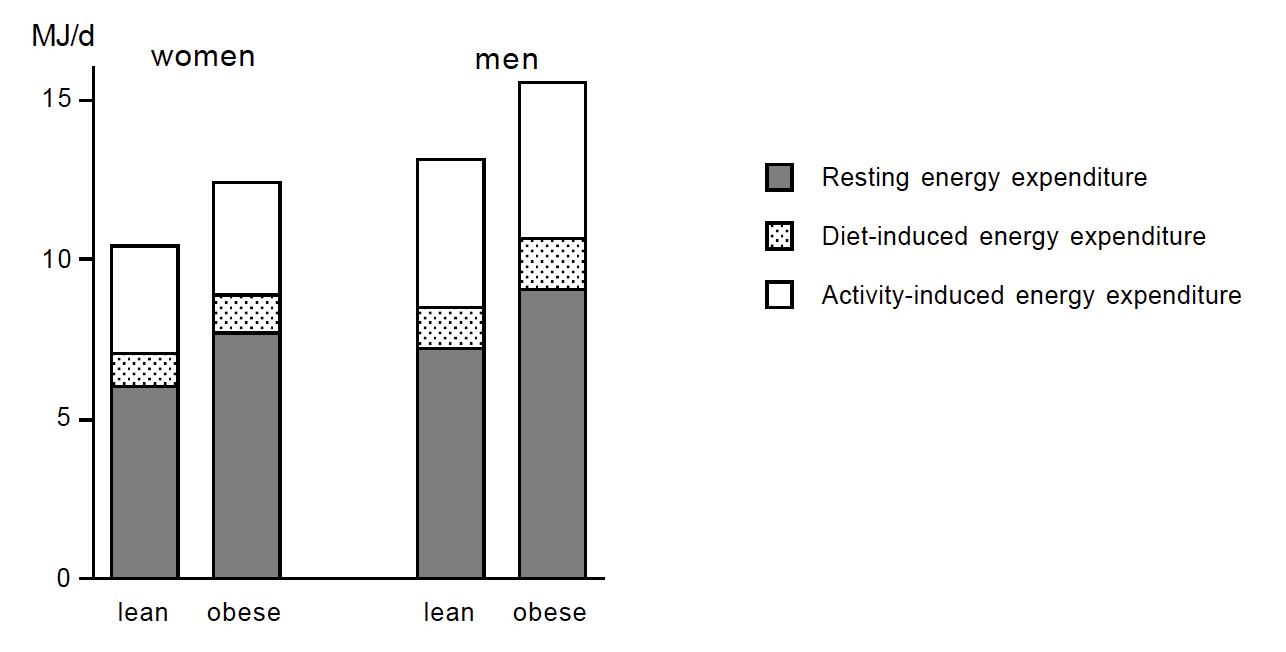
Figure 6: The three components of energy expenditure: resting energy expenditure (closed bar), diet-induced energy expenditure (stippled bar), and activity-induced energy expenditure (open bar) as observed in lean and obese subjects. In the lean group, women and men weighed 61 kg and 74 kg with 29% and 17% body fat, respectively. In the obese group, subjects were on average 40 kg heavier, where 70% of the additional weight was fat mass and 30% fat-free mass. The figure clearly illustrates the higher energy expenditure (primarily in resting energy expenditure) in men than in women and in obese than in lean subjects. (After reference 14).
